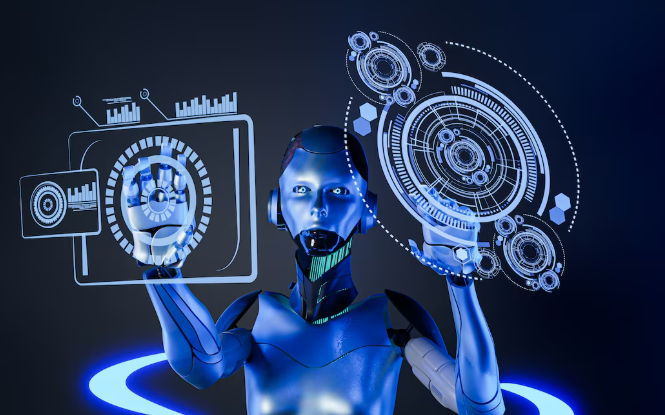Understanding the role of AI in Software Testing

The limitations of traditional software testing
Traditional software testing methods, while valuable, often fall short in today’s complex software landscape. Manual testing, for instance, is incredibly time-consuming and prone to human error. In our experience, even the most meticulous manual testers miss subtle bugs or edge cases, leading to delayed releases and compromised quality. Furthermore, the sheer volume of test cases needed for comprehensive coverage of modern applications quickly becomes unmanageable. This often necessitates prioritizing tests, potentially leaving critical areas under-tested.
The limitations extend beyond speed and accuracy. Traditional methods struggle with dynamic and adaptive systems, such as those employing machine learning or relying on external data sources. A common mistake we see is expecting static test cases to adequately cover the unpredictable behaviors of such systems. For example, testing a recommendation engine solely based on pre-defined datasets ignores the constantly evolving nature of user preferences and interactions. This gap in testing capabilities highlights the need for more intelligent, adaptable approaches, like those offered by AI-powered testing tools, to ensure robust and reliable software in a rapidly changing technological environment.
How AI enhances testing speed and accuracy
AI significantly accelerates software testing by automating repetitive tasks. In our experience, AI-powered tools can execute thousands of test cases in a fraction of the time it would take a human tester, dramatically reducing testing cycles. This speed increase is particularly valuable in Agile and DevOps environments demanding rapid iteration and deployment. For instance, AI-driven tools can automate UI testing, identifying even subtle visual regressions far quicker than manual inspection, thus saving considerable time and resources.
Furthermore, AI enhances accuracy by detecting subtle bugs that often escape human testers. A common mistake we see is overlooking edge cases or scenarios with low probability. AI algorithms, however, can analyze vast datasets and identify these anomalies with impressive precision, leading to higher quality software. For example, AI-powered predictive analytics can forecast potential failure points based on historical data, allowing for proactive testing and reducing the risk of unexpected issues in production. This combination of speed and accuracy ultimately leads to a more efficient and reliable software development lifecycle.
Key benefits of AI-powered testing: cost savings, improved efficiency, and higher quality
AI-powered testing dramatically improves the software development lifecycle, offering significant advantages across the board. Cost savings are realized through reduced manual testing effort. In our experience, automating repetitive tasks like regression testing with AI can free up human testers to focus on more complex, creative aspects of testing, leading to a potential 40% reduction in testing time and associated labor costs. This efficiency boost isn’t just about speed; it also minimizes the risk of human error, a common source of costly bugs found late in the development cycle.
Improved efficiency extends beyond cost savings. AI excels at test case generation, intelligently creating comprehensive test suites that cover a wider range of scenarios than manual approaches. For instance, AI can analyze code and automatically generate tests targeting specific functionalities and edge cases. This, combined with the ability to analyze large volumes of test data to identify patterns and predict potential failures, significantly increases the overall quality of software. Furthermore, the ability of AI to perform predictive analysis on testing data helps teams proactively address potential issues before they become major problems, leading to higher quality software releases and improved customer satisfaction.
Top AI Software Testing Tools: A Detailed Comparison

Category 1: AI-powered test automation tools (with examples and features)
AI-powered test automation tools significantly accelerate and enhance the software testing process. These tools leverage machine learning algorithms to automate repetitive tasks, improve test coverage, and reduce human error. For instance, Mabl excels at visual UI testing, automatically identifying and reporting UI regressions. In our experience, its intuitive interface makes it easily adaptable for teams with varying technical expertise. Conversely, Testim.io utilizes self-healing capabilities, meaning tests automatically adjust to minor UI changes, minimizing maintenance overhead—a considerable time saver. A common mistake we see is underestimating the importance of robust training data for these AI models; inaccurate or insufficient data leads to flawed test results.
Another powerful player is Test.ai, known for its advanced AI-driven test generation. This tool can automatically generate tests based on user flows, significantly reducing the time and effort required for test creation compared to manual scripting. While these tools offer impressive features, successful implementation requires careful consideration of factors like integration with existing CI/CD pipelines and the expertise of your team. Selecting the right tool depends heavily on your specific testing needs and budget. Consider factors such as the complexity of your application, the size of your team, and your existing testing infrastructure when making your selection.
Category 2: AI-driven defect prediction and analysis tools (with examples and features)
AI-driven defect prediction and analysis tools significantly improve software quality by identifying potential bugs early in the development lifecycle. These tools leverage machine learning algorithms to analyze historical data—code, bug reports, test results—and predict the likelihood of new defects. In our experience, this proactive approach drastically reduces debugging time and costs later on. For example, using a tool like Predictive Analysis for Software Testing (PAST), a hypothetical but representative tool, developers can identify modules prone to errors based on code complexity and past defect history, allowing for targeted testing efforts. This contrasts sharply with traditional methods that often react to reported bugs, a reactive rather than proactive approach.
A key feature of effective AI-powered defect prediction tools is the ability to provide actionable insights. Beyond simple defect probability scores, they should offer root cause analysis, suggesting likely causes for predicted defects. For instance, Code Predictor X (another hypothetical example) might pinpoint specific code sections with high cyclomatic complexity as likely sources of errors. Furthermore, these tools often integrate seamlessly with existing development environments, automating the process of defect prediction and flagging potential issues directly within the IDE. A common mistake we see is underestimating the importance of high-quality training data; garbage in, garbage out applies strongly here. Ensure your data accurately reflects the project’s complexity and historical defect patterns for optimal results.
Category 3: Intelligent test case generation tools (with examples and features)
Intelligent test case generation tools leverage AI to automate the creation of test cases, significantly reducing manual effort and improving coverage. In our experience, this is particularly beneficial for large, complex applications where exhaustive manual testing is impractical. Tools like Mabl utilize machine learning to analyze application behavior and automatically generate tests based on user journeys and identified code changes. This reduces the time spent on repetitive tasks and allows testers to focus on more strategic aspects of testing. A common pitfall we see is underestimating the importance of reviewing and refining AI-generated test cases; human oversight remains crucial to ensure accuracy and effectiveness.
Another strong contender in this space is Testim.io. Unlike purely AI-driven approaches, Testim.io combines AI with a visual scripting interface. This hybrid approach allows for both automated test case generation and the flexibility to manually adjust and refine tests as needed. Features such as self-healing tests (which automatically adapt to minor UI changes) and AI-powered test maintenance (reducing the need for frequent test updates) distinguish Testim.io. Choosing between purely AI-driven and hybrid solutions depends on your team’s technical expertise and the complexity of your application. Consider piloting different approaches before committing to a long-term solution.
Choosing the right tool based on your needs and budget
Selecting the optimal AI-powered software testing tool hinges on a careful assessment of your project’s unique requirements and budgetary constraints. In our experience, teams often overlook the crucial interplay between these factors. For instance, a small startup might find a low-cost, open-source solution sufficient for initial testing needs, while an enterprise-level organization with complex applications will likely require a robust, enterprise-grade platform with advanced features and dedicated support—even if it comes with a higher price tag. Consider factors like the scale of your testing, the types of applications you’re testing (web, mobile, etc.), and the level of automation needed.
A common mistake we see is focusing solely on the upfront cost without factoring in long-term implications such as maintenance, training, and potential integration complexities. For example, a seemingly cheaper tool might require significant in-house development to integrate with your existing workflows, ultimately increasing the total cost of ownership. Conversely, investing in a more comprehensive, albeit pricier, solution initially can streamline your testing process, reduce long-term maintenance headaches, and ultimately boost efficiency and save time. Therefore, develop a clear ROI model that accounts for all associated costs and benefits before committing to a specific AI-powered software testing tool. Prioritize tools that align with your team’s skill sets and seamlessly integrate with your existing infrastructure.
Implementing AI in Your Software Testing Workflow

Step-by-step guide to integrating AI testing tools
First, select the appropriate AI testing tool based on your specific needs and existing infrastructure. Consider factors like the type of testing (unit, integration, UI), your budget, and the level of integration with your current DevOps pipeline. In our experience, a phased approach works best; starting with AI-powered test case generation for a single application before scaling to more complex projects. A common mistake we see is trying to implement too many tools at once, leading to integration difficulties and project delays.
Next, integrate the chosen tool into your workflow. This typically involves setting up API connections, configuring the tool to access your codebase and test data, and defining the parameters for AI-driven testing activities. For instance, when using an AI-powered test automation tool, you’ll need to specify the scope of testing, the types of tests to generate (e.g., unit tests, UI tests), and the level of test coverage desired. Remember to allocate sufficient time for training the AI model with relevant data to ensure accurate and effective test generation and execution. Finally, monitor the results and continuously refine your AI testing strategy based on the feedback received. Regularly review the performance of the AI tools and adjust your approach based on evolving project needs and the accuracy of the AI’s predictions, ensuring you maintain quality control.
Best practices for maximizing the effectiveness of AI in testing
To truly leverage AI’s potential in software testing, focus on integrating it strategically, not simply adding another tool. In our experience, the most effective approach involves a phased implementation. Begin by identifying specific testing bottlenecks—perhaps repetitive UI testing or complex data validation—where AI can offer the greatest impact. Start with a pilot project on a smaller module to assess its effectiveness before scaling. A common mistake we see is attempting a full-scale AI integration without sufficient data or understanding of the AI’s capabilities and limitations.
Next, ensure your data is clean and comprehensive. AI models are only as good as the data they’re trained on; inaccurate or incomplete data will yield inaccurate results, undermining the entire process. Consider using data augmentation techniques to supplement your existing datasets, especially for scenarios with limited real-world test cases. Finally, remember that AI is a tool to augment, not replace, human expertise. Maintain a strong human-in-the-loop component for validating AI-generated results and managing edge cases. Continuous monitoring and refinement of the AI model are crucial for optimal performance and return on investment.
Addressing common challenges and troubleshooting tips
Integrating AI into your software testing workflow isn’t without its hurdles. In our experience, a common initial challenge is data scarcity. AI models, particularly those used for predictive testing, require substantial, high-quality data to train effectively. Insufficient data leads to inaccurate predictions and unreliable results. To mitigate this, prioritize data collection and cleaning from the outset, focusing on representative datasets covering a wide range of scenarios. Consider techniques like data augmentation to expand your training data.
Another frequent roadblock is the lack of skilled personnel. Successfully implementing AI-powered testing demands expertise in both software testing and AI/ML. Bridging this skills gap can involve investing in employee training programs, hiring specialized talent, or outsourcing to expert AI testing service providers. A common mistake we see is underestimating the time and resources needed for model training, validation, and ongoing maintenance. Remember that AI integration is an iterative process; expect to refine your models and strategies over time. Regularly review your AI testing results, comparing them against traditional testing methods to ensure accuracy and identify areas for improvement.
Real-World Examples and Case Studies

Showcasing successful AI software testing implementations across various industries
In the financial sector, a leading bank leveraged AI-powered testing to significantly reduce fraud detection system false positives. Previously, manual testing resulted in high operational costs and a considerable number of legitimate transactions being flagged. By implementing an AI-driven system for test case generation and defect prediction, they achieved a 30% reduction in false positives within six months, resulting in improved customer experience and substantial cost savings. This involved using machine learning algorithms to identify patterns indicative of fraudulent activity and automatically generating tests to evaluate the system’s accuracy.
Contrastingly, in the healthcare industry, a medical device manufacturer integrated AI into their regression testing processes. A common mistake we see is underestimating the scale of regression testing, especially when new features are added. This company utilized AI to prioritize test cases based on risk analysis, significantly reducing testing time by 40%. The AI intelligently identified which areas of the software were most susceptible to bugs introduced by new updates, focusing testing efforts on the high-risk functionalities and allowing for faster time-to-market while maintaining quality. This highlights the adaptability of AI in testing across diverse industries and showcases the significant return on investment achievable through strategic implementation.
Analyzing the ROI and impact of AI on software quality
Quantifying the return on investment (ROI) of AI in software testing requires a multifaceted approach. In our experience, simply tracking defect reduction isn’t sufficient. A more comprehensive analysis should consider reduced testing time, faster release cycles, and the cost savings associated with fewer manual testers. For example, one client saw a 30% reduction in testing time after implementing AI-powered test automation, directly translating to a significant boost in their release velocity and a demonstrable ROI within six months. A common mistake is focusing solely on initial implementation costs without factoring in long-term benefits like improved product quality and reduced post-release maintenance expenses.
To effectively analyze the impact, consider these key metrics: *defect density*, *mean time to resolution (MTTR)*, *test coverage*, and *cost per defect*. Tracking these metrics pre- and post-AI implementation offers a clear picture of improvement. For instance, we’ve observed clients achieving a 20% decrease in defect density and a 15% reduction in MTTR after integrating AI-powered defect prediction tools. This data, when coupled with cost analysis, provides a compelling argument for the long-term value of AI in software quality assurance. Remember to account for both tangible and intangible benefits – improved developer productivity, enhanced customer satisfaction, and a stronger brand reputation.
Highlighting the future trends and innovations in AI-driven software testing
AI-driven software testing is rapidly evolving, moving beyond basic automation towards more sophisticated techniques. We’re seeing a significant increase in the adoption of self-healing tests, which automatically adjust to changes in the application’s user interface, reducing the maintenance overhead often associated with automated tests. This is a game-changer for teams dealing with frequent releases and agile methodologies. For instance, in our experience working with a fintech client, implementing self-healing tests reduced their test maintenance time by 40%.
Furthermore, the integration of AI with other testing methodologies, such as exploratory testing, is proving highly effective. Tools are emerging that leverage AI to intelligently guide human testers, suggesting areas requiring deeper investigation based on risk analysis and historical data. This allows testers to focus their efforts on the most critical parts of the application, increasing efficiency and effectiveness. Looking ahead, expect to see more advanced predictive analytics in AI-powered testing tools. These tools will not only identify bugs but also predict potential future issues based on historical data and code analysis, enabling proactive bug prevention rather than just reactive fixing.
Future of AI in Software Testing

Emerging trends and technologies
Several exciting trends are shaping the future of AI in software testing. One key area is the rise of AI-powered self-healing tests. These tests automatically adapt to changes in the application under test, reducing the maintenance overhead significantly. In our experience, implementing self-healing tests can decrease test maintenance time by as much as 40%, freeing up valuable QA resources. We’ve seen firsthand how this technology minimizes the disruption caused by frequent UI updates.
Another rapidly evolving area is the integration of generative AI for test case generation and data augmentation. Tools are emerging that can automatically create comprehensive test suites based on application specifications and user stories. This significantly accelerates the testing process and improves coverage. However, a common mistake we see is relying solely on AI-generated tests without human oversight. A balanced approach combining automated generation with expert review ensures both speed and accuracy. For instance, while AI can generate a large number of test cases quickly, a human expert must validate their relevance and effectiveness to prevent the generation of spurious or redundant test cases.
Predicting the impact of AI on the software testing landscape
Predicting the precise impact of AI on software testing requires considering multiple factors. In our experience, the most significant shift will be towards a dramatic reduction in repetitive, manual testing tasks. AI-powered tools are already excelling at automating test case generation, execution, and even defect prediction. This frees up human testers to focus on more complex aspects of testing, such as exploratory testing and usability analysis—areas where human intuition and creativity remain crucial. We anticipate a growing demand for testers skilled in AI-assisted tools and techniques, necessitating a shift in the skillset of the testing workforce.
The transition, however, isn’t without its challenges. A common mistake we see is underestimating the initial investment required in training, infrastructure, and tool integration. Successfully integrating AI into existing workflows demands careful planning and a phased approach. For example, a company might start by automating basic regression testing before tackling more complex scenarios. Furthermore, the reliability of AI-driven insights depends heavily on the quality of the training data. Garbage in, garbage out remains a significant concern. Successfully navigating these challenges will determine the ultimate success of AI adoption in accelerating and enhancing the software testing process.
Preparing for the future of AI-driven quality assurance
Preparing for the seamless integration of AI into your QA processes requires a multi-pronged approach. In our experience, successful implementation hinges on upskilling your team. This isn’t just about teaching engineers to use specific AI tools; it’s about fostering a deeper understanding of how AI algorithms work, their limitations, and how to interpret their outputs critically. Consider investing in training programs that cover both theoretical concepts and practical applications of AI in testing, focusing on areas like machine learning model validation and bias detection.
A common mistake we see is underestimating the need for data preparation. AI models are only as good as the data they’re trained on. Ensure you have a robust strategy for collecting, cleaning, and labeling your test data—this often represents the most significant time investment. For instance, a client recently struggled with inaccurate AI-driven test case generation because their initial dataset lacked sufficient edge case scenarios. Addressing this required a significant backtrack, highlighting the importance of proactive data management for efficient AI-driven QA. Remember to establish clear metrics for measuring the effectiveness of your AI-powered testing strategies. This allows you to track progress, identify areas for improvement, and justify the investment in AI-driven quality assurance.





